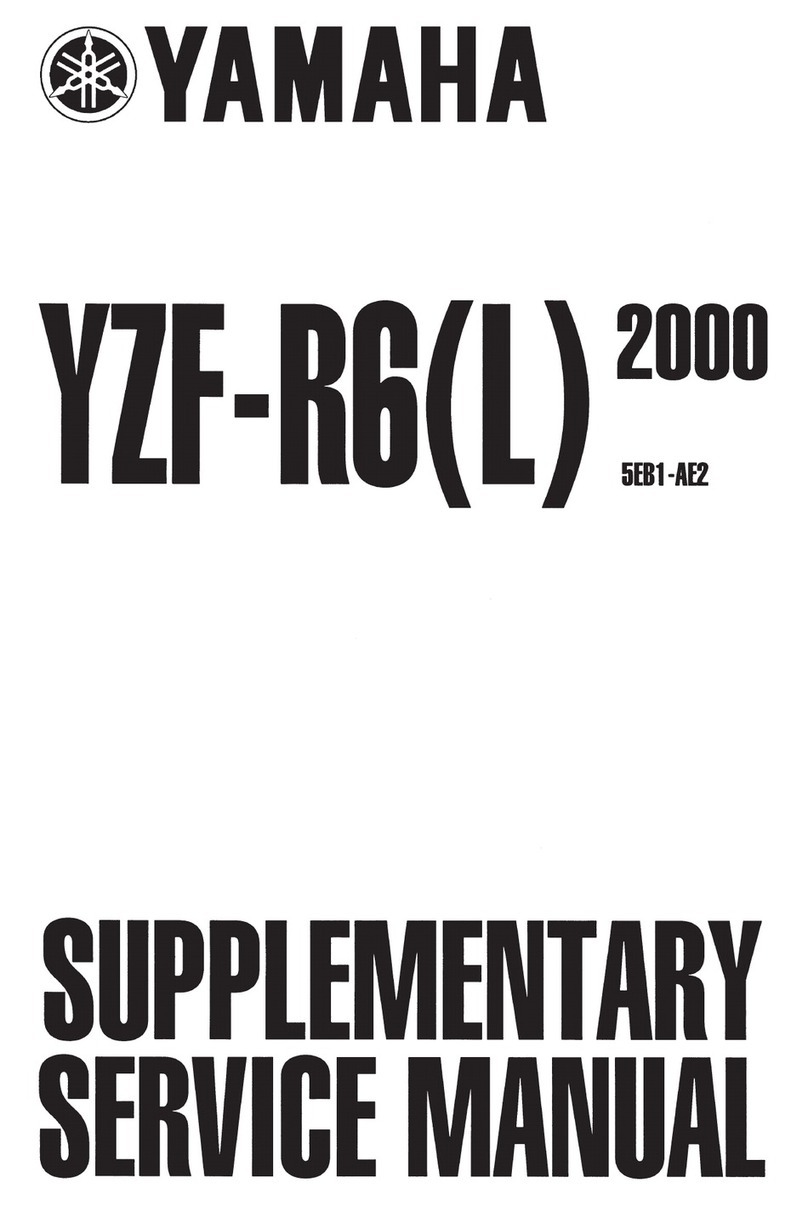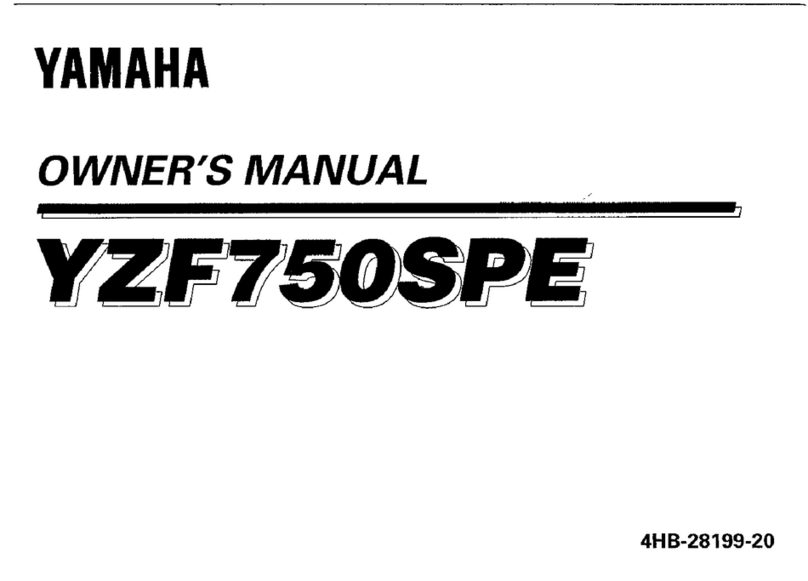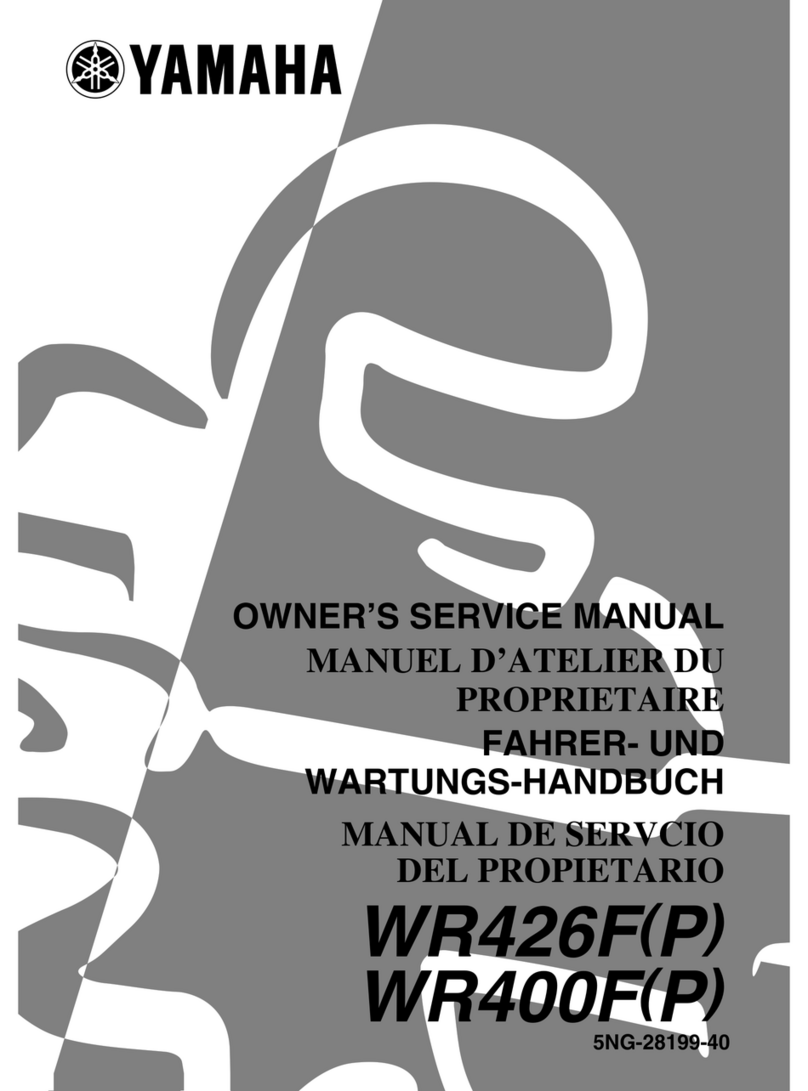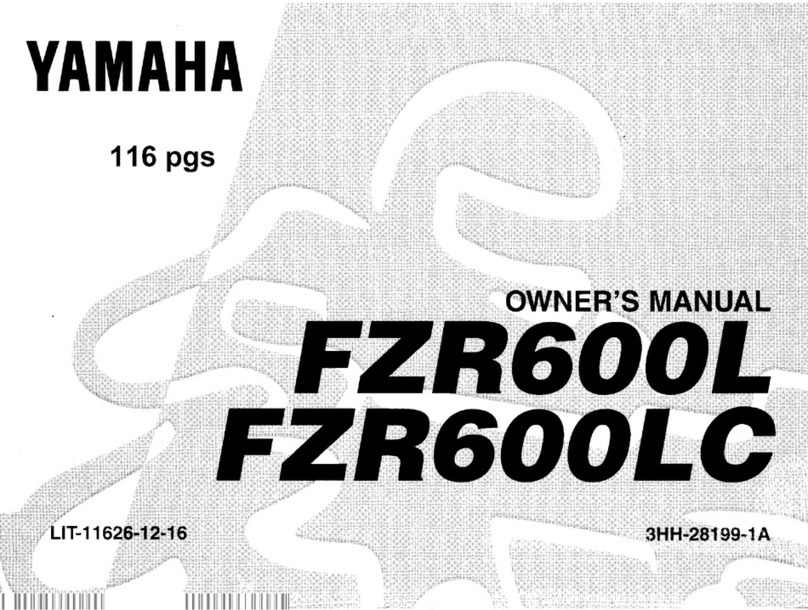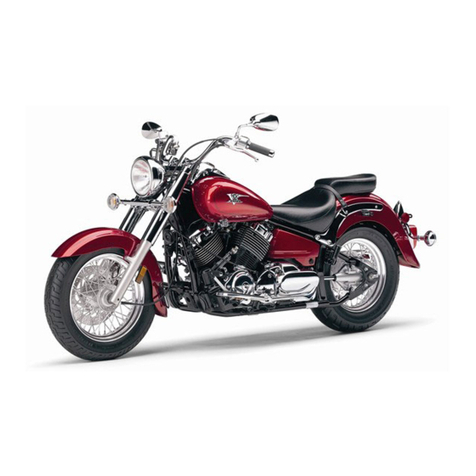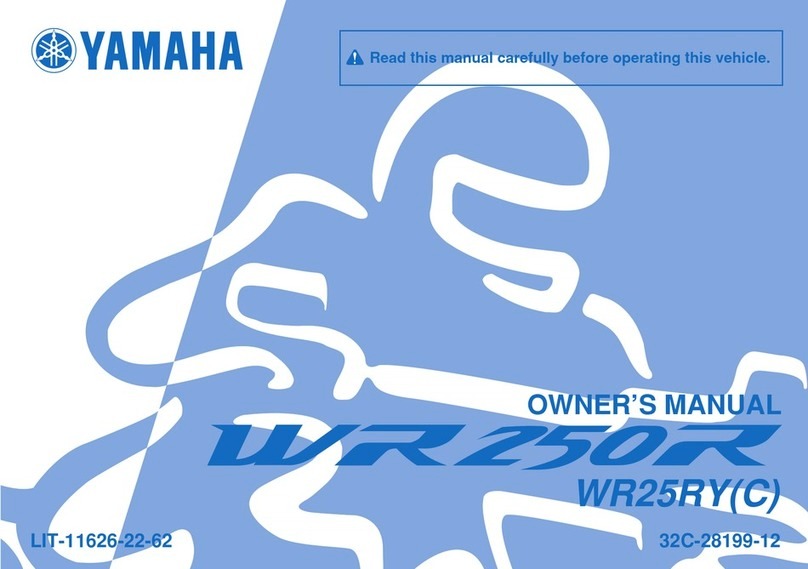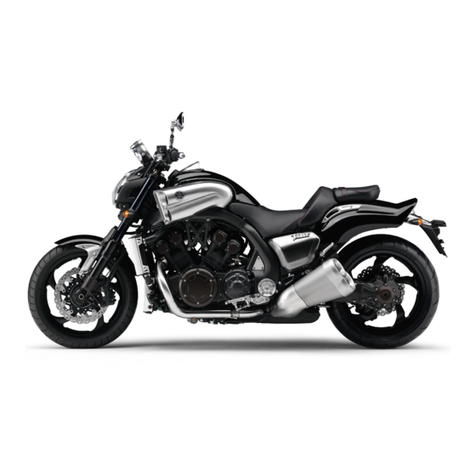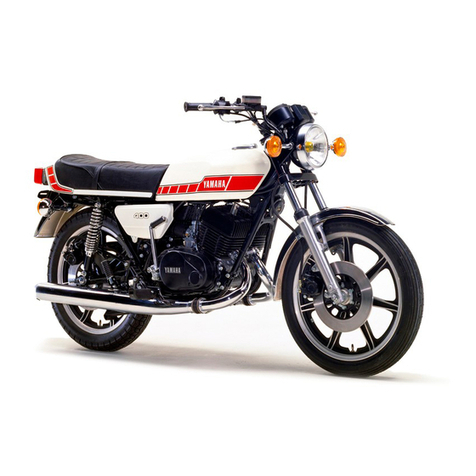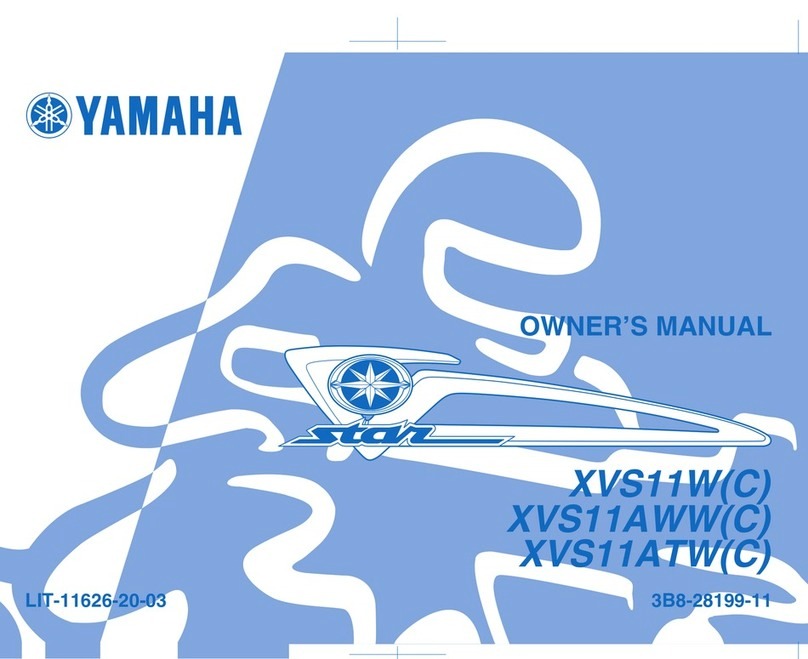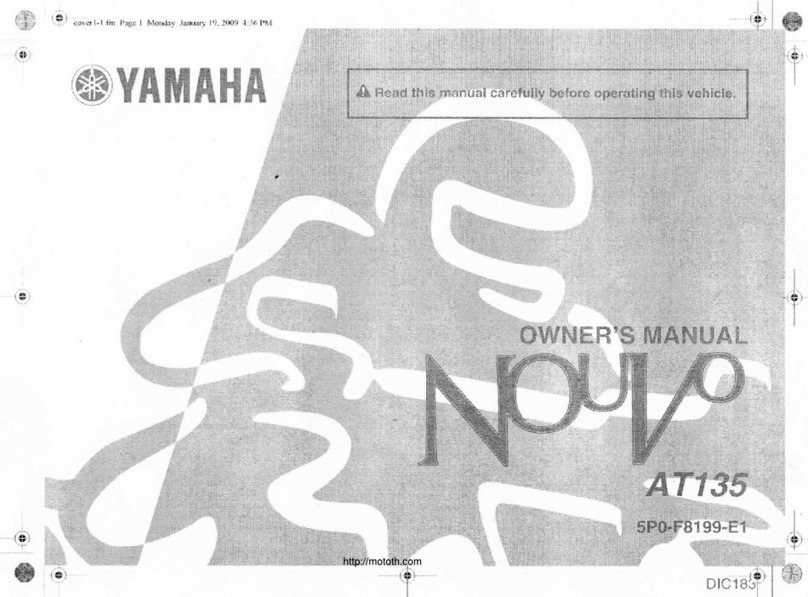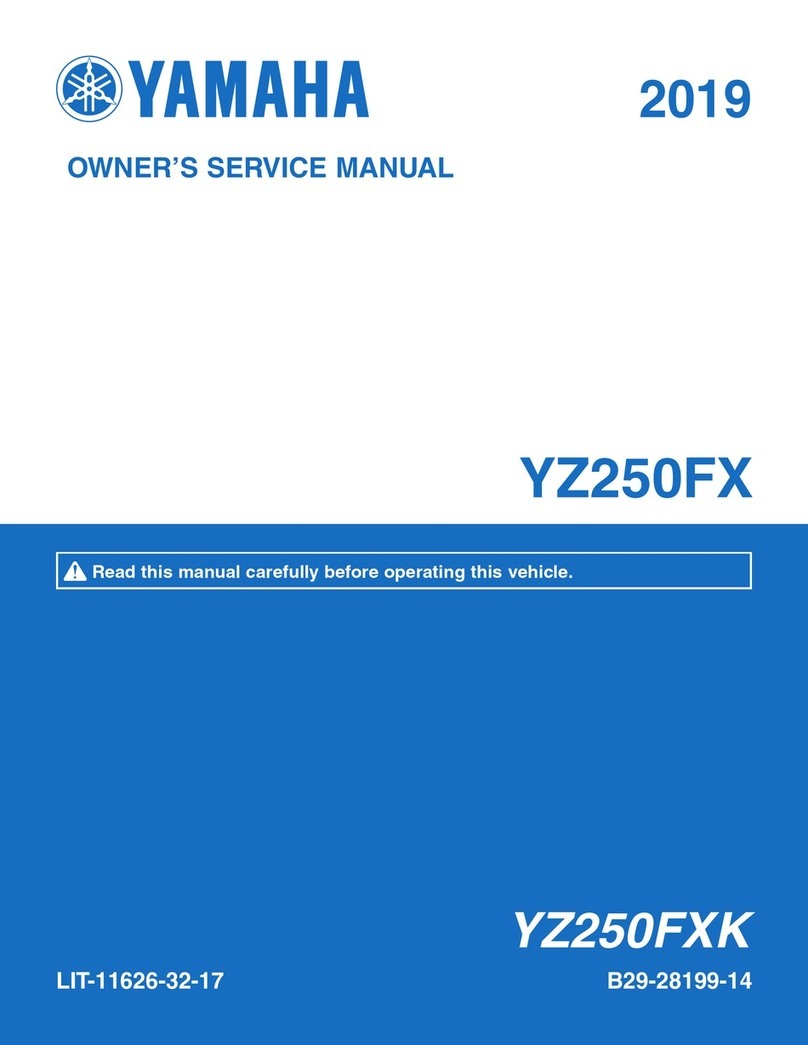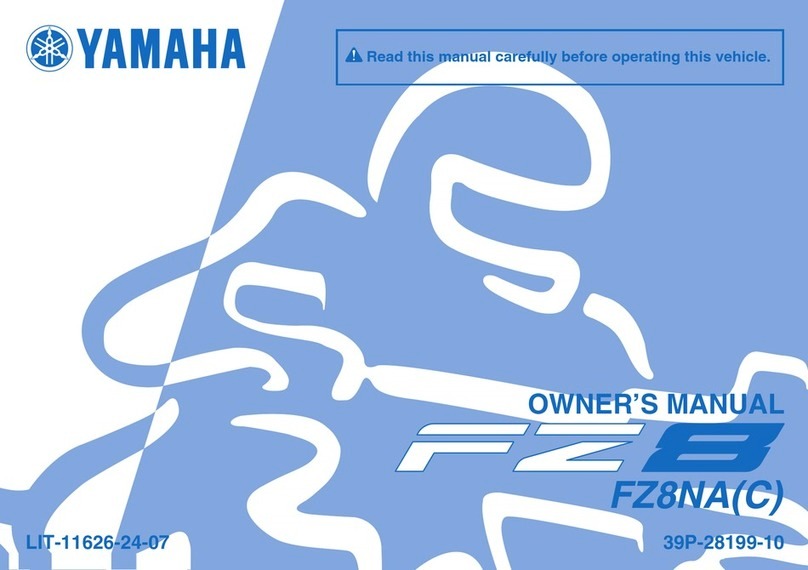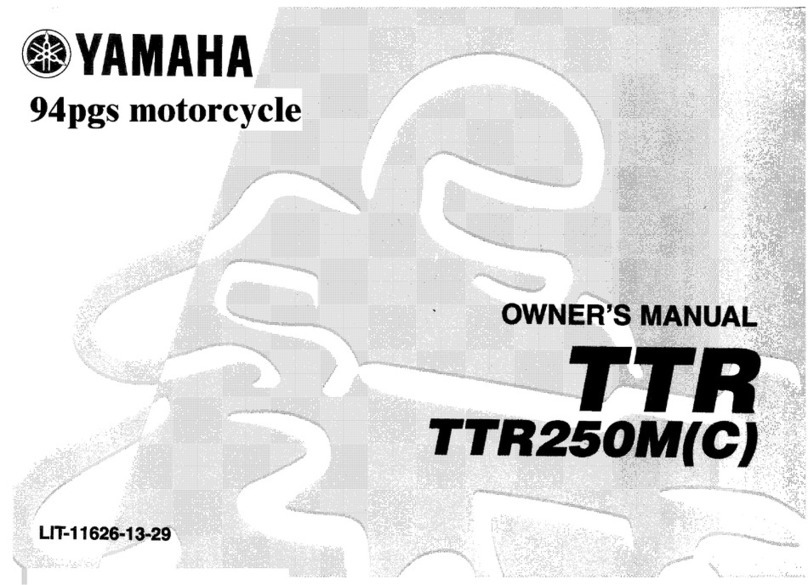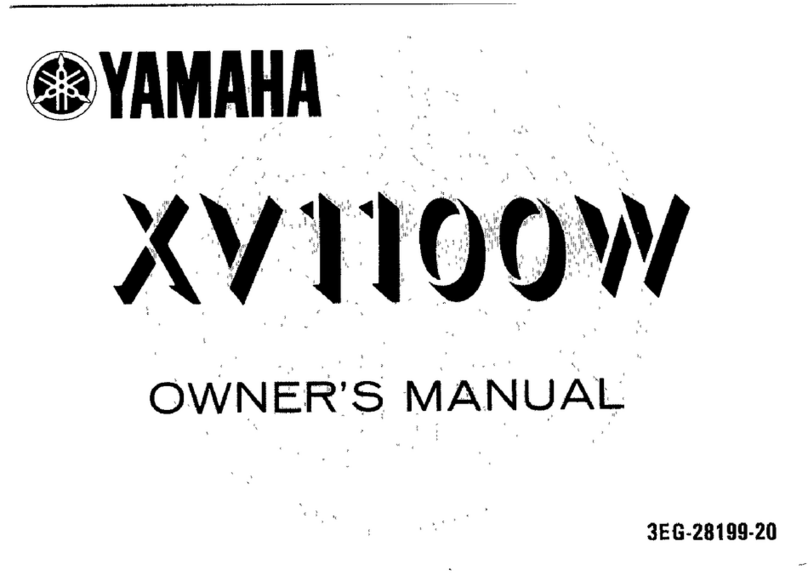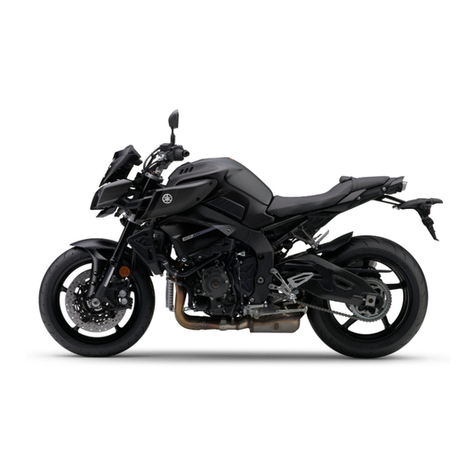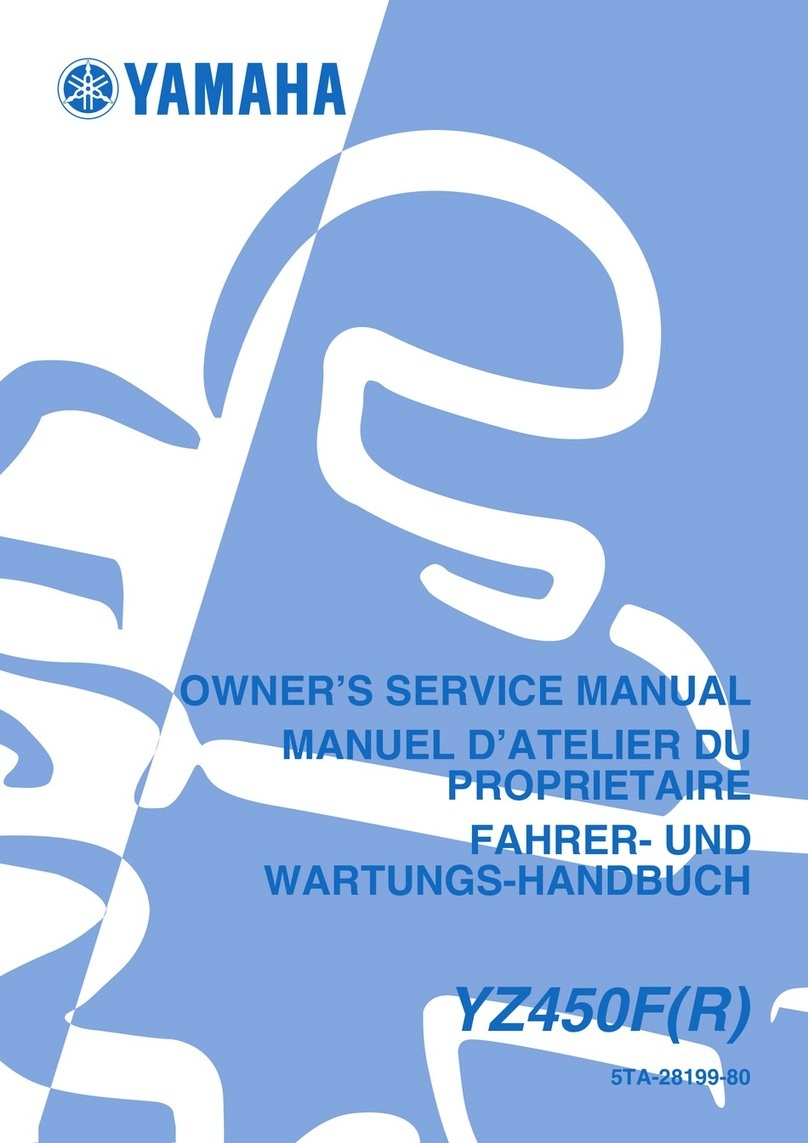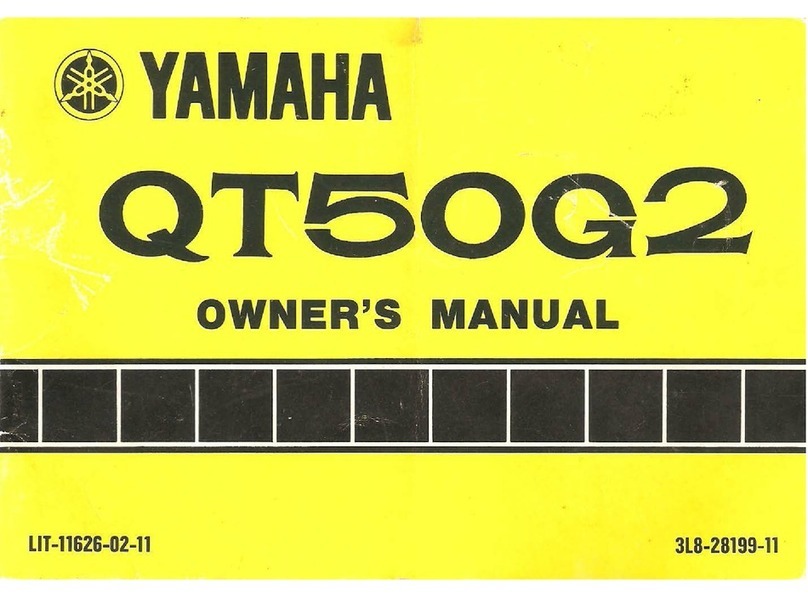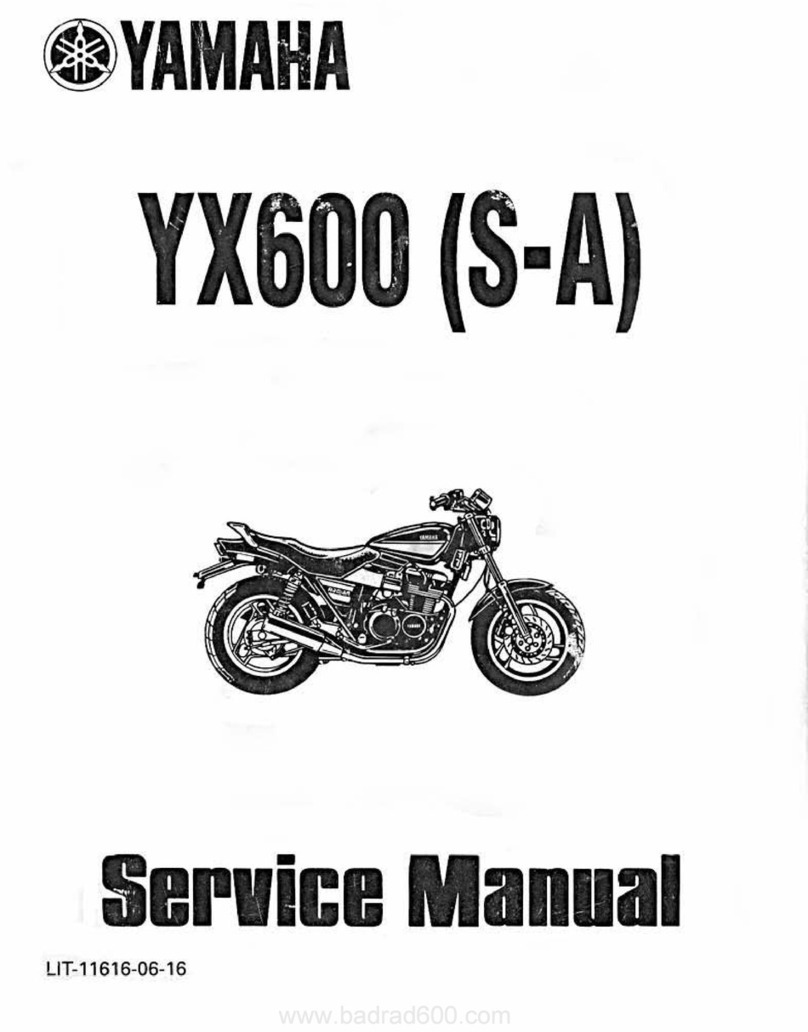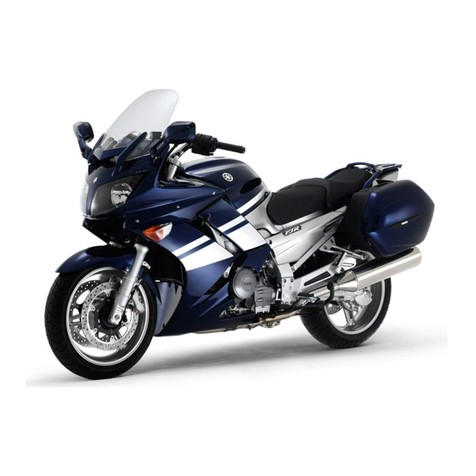SAFETY INFORMATION.....................1-1
DESCRIPTION.....................................2-1
Left view ...........................................2-1
Right view .........................................2-2
Controls and instruments .................2-3
INSTRUMENT AND CONTROL
FUNCTIONS ........................................3-1
Main switch/steering lock.................3-1
Indicator and warning lights .............3-2
Turn signal indicator light ................3-2
Neutral indicator light ......................3-2
Oil level warning light ......................3-2
Coolant temperature warning light ..3-3
Engine trouble warning light ............3-3
Speedometer unit .............................3-3
Tachometer .......................................3-4
Handlebar switches ..........................3-4
Pass switch ......................................3-4
Dimmer switch .................................3-4
Turn signal switch ............................3-4
Horn switch .....................................3-4
Engine stop switch ..........................3-5
Start switch ......................................3-5
Clutch lever.......................................3-5
Shift pedal.........................................3-5
Brake lever........................................3-6
Brake pedal.......................................3-6
Fuel tank cap ....................................3-6
Fuel ...................................................3-7
Fuel tank breather/overflow hose.....3-8
Catalytic converter............................3-9
2-stroke engine oil............................3-9
Fuel cock ........................................3-10
Starter (choke) lever ......................3-11
Seat.................................................3-11
Anti-theft device housing................3-12
Rear view mirrors............................3-12
Sidestand........................................3-13
Ignition circuit cut-off system.........3-13
FOR YOUR SAFETY –
PRE-OPERATION CHECKS ...............4-1
Pre-operation check list....................4-2
OPERATION AND IMPORTANT
RIDING POINTS..................................5-1
Starting a cold engine ......................5-1
Starting a warm engine ....................5-2
Shifting..............................................5-2
Tips for reducing fuel
consumption..................................5-3
Engine break-in.................................5-3
Parking..............................................5-4
PERIODIC MAINTENANCE AND
ADJUSTMENT ....................................6-1
Owner’s tool kit.................................6-1
Periodic maintenance chart for the
emission control system ...............6-3
General maintenance and lubrication
chart ..............................................6-4
Removing and installing cowlings
and panels.....................................6-8
Checking the spark plug ................6-10
Transmission oil ..............................6-11
Coolant ...........................................6-13
Air filter element..............................6-15
Adjusting the carburetor.................6-16
Adjusting the engine idling speed ..6-16
Adjusting the throttle cable free
play..............................................6-17
Tires ................................................6-17
Cast wheels ....................................6-19
Adjusting the clutch lever free
play..............................................6-19
Checking the front brake lever free
play..............................................6-20
Adjusting the brake pedal free
play..............................................6-20
Adjusting the shift pedal position...6-21
Adjusting the rear brake light
switch ..........................................6-21
Checking the front and rear brake
pads.............................................6-21
Checking the brake fluid level ........6-22
Changing the brake fluid ................6-23
Drive chain slack.............................6-24
Cleaning and lubricating the drive
chain............................................6-25
TABLE OF CONTENTS
